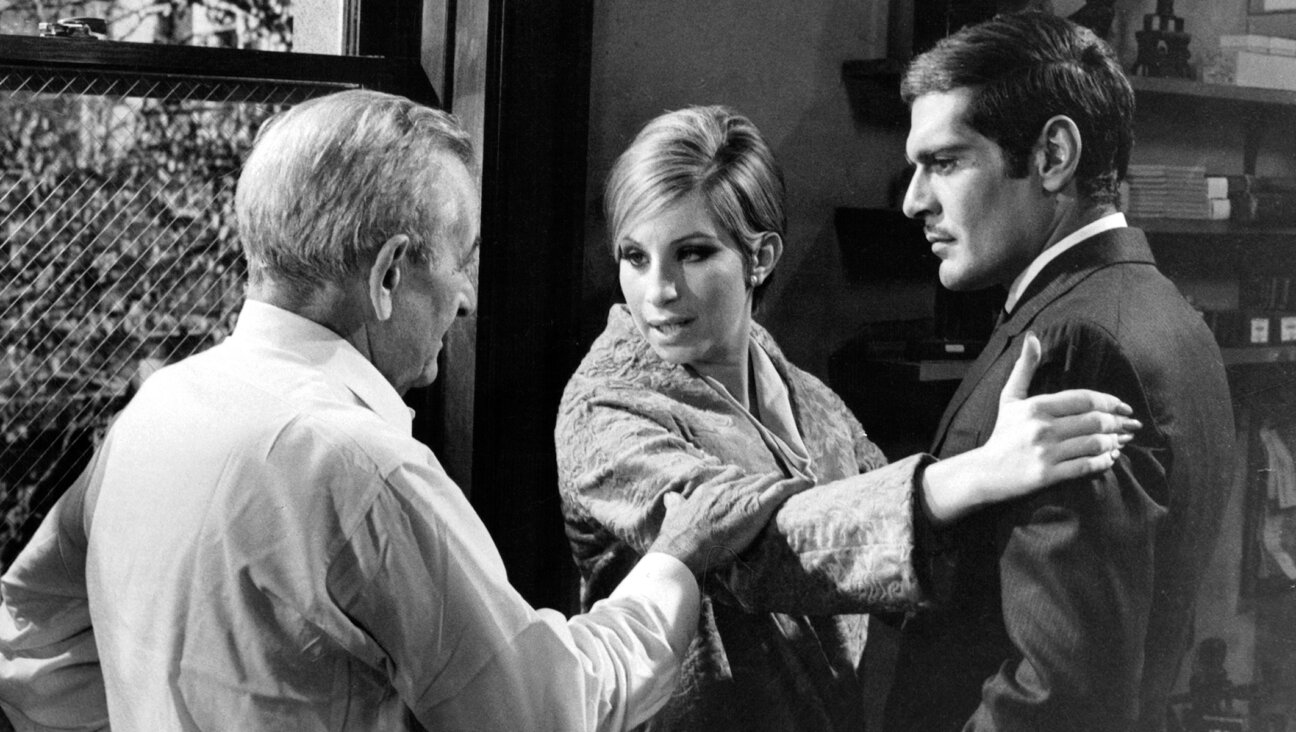Probing Brown’s Dark History
Last month, Brown University released the results of a three-year study of its historical relationship to slavery and the slave trade, and suggested several steps to inform the public about this dark chapter in its past, including the creation in Rhode Island of a memorial to the slave trade. Surprisingly, although the report has a section titled “Confronting Historical Injustice: Comparative Perspectives,” it includes no mention of the history of another form of hateful bigotry: Jewish quotas in its admissions from the 1920s to 1940s.
As detailed by Dan Oren in “Joining the Club: A History of Jews and Yale,” and by Jerome Karabel in “The Chosen: The Hidden History of Admission and Exclusion at Harvard, Yale, and Princeton,” all the Ivies engaged in institutionalized discrimination against Jews between the First and Second World Wars, as Jewish applicants soared and colleges became wary of losing support from wealthy Protestant parents. My own grandmother, Sara Sohn, graduated Pembroke, then the women’s college at Brown, in 1929, and knew there had been Jewish quotas when she attended. She was deeply distressed by this, but she told me it was a product of the times. In the early 1920s, a prospective student gained admission to Brown by passing a joint exam given by a group of colleges that included Brown, Princeton, Yale and Harvard. This was a purely meritocratic system. Private schools (which most working-class Jews could not afford at the time) prepped their students specifically for the exams, but an increasing number of public school graduates, many of them children of Russian Jewish immigrants, also passed. These young, poor urban men and women soon found their way into the Ivies and into their sister schools, studying side by side with the WASP elite — who had come to college to socialize, date and, of course, play football. As these studious and hardworking Jews, some of whom did not participate in the social life of their schools, began gaining admission to elite Northeastern colleges, administrators were faced with a problem: Protestant parents did not like their Muffies and Garths living in dormitories with Pessies and Jakes. A Brown humor magazine of the 1920s, Brown Jug, devoted an entire issue in 1921 to mocking “carpetbaggers”: commuting students who brought big book-bags to school and were antithetical to the ideal of the athletic, jovial and well-dressed “Brown man.” The issue caricatured these supposed interlopers as short, stooped men with large noses and glasses, and real Brown men as robust and muscular with strong jaws. This antisemitic spirit was in keeping with the anti-immigrant sentiment of the time; Harvard’s own president, A. Lawrence Lowell, was vice president of the Immigration Restriction League and helped pass the Immigration Quota Act of 1921. A popular college song of the late 1910s went: “Oh, Harvard’s run by millionaires/And Yale is run by booze/Cornell is run by farmers’ sons/Columbia’s run by Jews/So give a cheer for Baxter Street/Another one for Pell/And when the little sheenies die/Their souls will go to hell.” Fearful of being tagged, like Columbia, as too Jewish, and of losing valuable financial support from the Protestant elite, Brown began to search for ways to restrict its Jewish numbers. In order to do this, the administrators had to broaden admissions requirements beyond the exam-driven system.
Over the next two decades, they implemented three policies that still exist today at most elite colleges: legacy preference (priority given to children and grandchildren of alums), “geographic” diversity (which penalized Jews, who were concentrated in big cities) and personal interviews (which let school officials guess applicants’ ethnicity according to their physical appearance). Gradually, the notion of the “whole” applicant became more important. Who you were, not just how you did on a test, would affect your chances of getting in. A 1932 form sent to references included the questions, “Is the applicant attractive and well-bred in appearance and department?” and “Is the applicant the kind of man whom you yourself would welcome as a classmate in college?” Pembroke’s admission form was amended in 1936 so that applicants had to report citizenship and religion, and their parents’ citizenship, religion, education, occupation and birthplace. In 1938, Pembroke admissions dean Eva A. Mooar revised the form again to include “language spoken at home” and “race.” In a stack of index cards of notes that Mooar took during personal interviews in s “Can’t tell whether Jewish or not”; “Father has wavy hair, few front teeth and a marked accent. Says they speak German at home. Germans or Jews? Are blond, so probably the former”; “Color just off-white. Mother, white — deceased. Father black”; “Looks Italian,” and “Nice, ‘money’ people.”
My own grandmother faced stereotyping in a reference letter written by one of her Pembroke professors to prospective employers in 1929: “Miss Sohn has some Jewish traits of personality that are not attractive,” he wrote. “Is inclined to push in and get as much as she can with the least possible expenditure of effort. But she dresses neatly and in good taste. In the right place she will do excellent work but should not be recommended for a position where a Jewess would not be acceptable.” The newfound emphasis on personal interviews and references did the trick, the goal of geographic diversity and legacy preference all did the trick. The number of Jews at Brown plummeted to 9% for the class of 1944 from 38% for the class of 1928. From 1930 to 1940, Brown’s admittance rate for Jews never topped 25%, while for the same period the rate for Protestants was consistently between 45% and 55%.
In a 1940 memo to another administrator, Brown’s dean of admissions, Bruce Bigelow, wrote: “The ‘Jewish problem’ continues to increase! Twenty-nine percent of all the applicants were Jewish, and only fifteen percent of this group were accepted and entered. Of the non-Jewish group, fifty-three percent were accepted and entered.” Despite the blatant antisemitism in this letter, all admission documents from Brown and Pembroke at this time referred to Jewish applicants as “X” or “H” (for Hebrew), even when these documents listed names that clearly were Jewish. The Scholastic Aptitude Test, which came into use during the 1930s, was implemented by at least one Ivy, the University of Pennsylvania, as a subterfuge for antisemitic discrimination. In a 1938 admissions report to Brown’s president, Henry Wriston, Bigelow wrote, “The Director of Admissions at Pennsylvania a few years ago told me that it was the X problem which led Penn to require the SAT. Since the test results do not go to the boys themselves, the admission officers are better able to reject those applicants who should be refused. Students in one school are less able to compare the applicants and question why Jones was admitted and Smith refused. The X problem is unfortunately becoming more and more acute.” It is no wonder many liberal schools today have done away with the SAT requirement — when its very reason for being was so administrators could lie to students about their results and have a rationale for refusal. After World War II and the passage of the G.I. Bill, formal Jewish quotas at the Ivies began to disappear — or they disappeared from Brown admission files. As Brown alum Norman B. Glazer, who graduated in 1951, recalled, “In the year before I applied to Brown, one of the questions on the application was, ‘Religion: Fill in the blank.’ By the time I applied in 1946, the question had been changed to, ‘In case of an emergency, do you want us to call a priest or a rabbi?’”
Though there are no Jewish quotas in the Ivies today, policies of geographic diversity and legacy preference still serve as de facto quotas. In the 1980s, Asian American students at Brown raised concerns that their admittance rate had declined because they tended to be concentrated in large cities and because interviewers stigmatized them as boring, grade-grubbing nerds, similar to the “carpetbagger” stereotype of Jews in the 1920s. This month’s Brown Report on Slavery and Injustice concluded: “We cannot change the past. But an instittion can hold itself accountable for the past, accepting its burdens and responsibilities along with its benefits and privileges. This principle applies particularly to universities, which profess values of historical continuity, truth seeking, and service.”
If Brown and other elite colleges are to become real truth seekers, they should find ways to acknowledge their past practice of discriminatory admissions, whether by rewriting their history, teaching it in American civilization courses or encouraging their students to publish scholarly work on the subject. More important, given the antisemitic derivation of so many of today’s admissions policies, admissions offices should begin to re-evaluate these policies and figure out ways to make admissions fairer. Some have already begun to do so. Harvard and Princeton recently announced that they would eliminate early admission (a policy said to discriminate against disadvantaged students who may not be aware they can apply this way). Perhaps schools will soon eliminate legacy preference, as well. This would be a welcome change and a return to a more meritocratic system. But as a third-generation Brown legacy and a mother, I just hope it doesn’t happen too quickly. My daughter will be applying to the class of 2027.
Amy Sohn, author of the novel “My Old Man” (Simon & Schuster), graduated from Brown University in 1995 and gave a commencement address on the history of Jewish quotas at the school.























